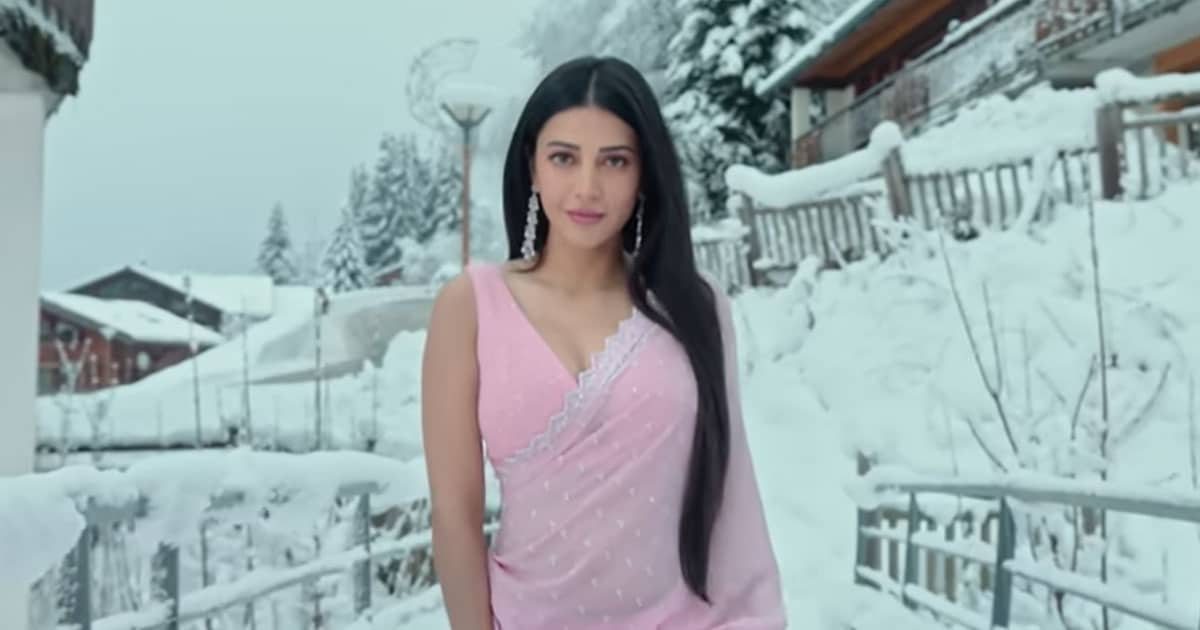Yash Chopra, the legendary filmmaker of Bollywood, was known for his romantic and extravagant movies that captured the essence of love and passion. He was also known for his signature style of depicting his heroines in sarees, even in freezing temperatures. This practice has sparked curiosity and controversy among moviegoers and critics alike.
Let’s explore why filmmakers are obsessed with heroines wearing sarees in freezing temperatures.

Recently, Shruti Haasan appealed to filmmakers to avoid making heroines dance in the mountains while wearing a blouse and a light saree. She highlighted how, in the name of glamour, glitz female actors’ attire is treated differently from men’s.
Shes got a point🤷♂️… pic.twitter.com/VuFU5INajT
— Aryan (@Pokeamole_) April 8, 2023
Sarees have an aesthetic appeal, and they are a quintessential element of Indian cinema and add a touch of glamour and elegance to the screen. The draping of the saree and the way it flows around the body can create a visual spectacle unmatched by any other garment.
Moreover, sarees are often used to depict a character’s personality, social status, and emotional state. For instance, a character wearing a simple cotton saree may be portrayed as humble and down-to-earth, while a designer silk saree may be characterized as wealthy and sophisticated.
Did you read: 25 Years Of DDLJ – How A Flawed Romance Became A Bollywood Classic
The audience of Indian cinema often expects to see the heroines dressed in traditional Indian attire, including sarees. This expectation is driven by the deep-rooted cultural significance of sarees in India and the association of sarees with femininity, grace, and beauty.
Another reason filmmakers in India make heroines wear sarees in freezing temperatures is to give in to the male temptation and their expectations.
Indian cinema has a massive male fan following, and they often expect to see the heroines dressed in traditional Indian attire, including sarees. This expectation is driven by the deep-rooted cultural significance of sarees in India and the association of sarees with femininity, grace, and beauty.
Moreover, Indian cinema has always portrayed an idealized version of Indian society, and sarees are crucial in that portrayal.
The traditional attire is seen as a symbol of Indian culture and values. It is used to create a nostalgic and romanticized version of India on the screen, which is adored and accepted by both male and female audiences. Therefore, filmmakers often use sarees to appeal to the audience’s emotions and to create a sense of cultural pride and nostalgia.
Yash Chopra’s heroines were often seen in intricately designed sarees embellished with jewels, beads, and embroidery. Using such sarees created a sense of fantasy and romance unmatched by any other garment.
The use of sarees in Chopra’s movies was often associated with grandeur, opulence, and extravagance, which created a larger-than-life effect on the screen. And yet, in Kabhi Kabhie, the same Yash Chopra made no compromises while shooting for the song “Tere Chehre Se Nazar” where Neetu Singh is seen dressed her best in warm clothes.
Though one could argue the logic and the reasoning behind this weird fantasy of dressing female actors in a saree and making them dance in the snow, the question remains – do female actors approve of this?
In Ae Dil Hai Mushkil, Anushka Sharma’s character fantasy was to dance like Sridevi in a chiffon saree amidst the snow-capped mountain. The world of Yash Chopra so consumed her character that she was willing to make any effort to fulfill the fantasy. However, her male counterpart, Ranbir Kapoor, fell flat on the ground due to the harsh weather conditions.
This satirical scene screams the ordeal female actors go through while creating a scintillating moment on screen.
Veteran actors such as Sharmila Tagore and Asha Parekh have previously spoken about their discomfort with sarees.
Sharmila Tagore recalls how Rajesh Khanna was dressed in warm clothes while she shivered in a saree when shooting for the song “Gun Guna Rahe Hai Bhawre” from Aradhna.
Though Asha Pareekh maintained appropriate clothing while shooting in the snow, she even wore a light saree for the song “Jab Chali Thandi Hawaa” in Raj Khosla’s Do Badan.
Over time new age filmmakers have changed the trend; for instance, in Yeh Jawaani Hai Deewani’s song Subhanallah, Deepika is seen in her snow trekking attire.
In conclusion, Shruti Haasan’s appeal to the filmmakers could have been, or not a marketing gimmick to promote her new release but to come out in the open with such honesty throws a prominent light on how women are dressed for a song and dance sequence on screen.
What’s your take on it? Do you think saree-clad heroines dancing amidst snow-capped mountains add to the aesthetic value on the screen, or do we need to define the aesthetics better?

